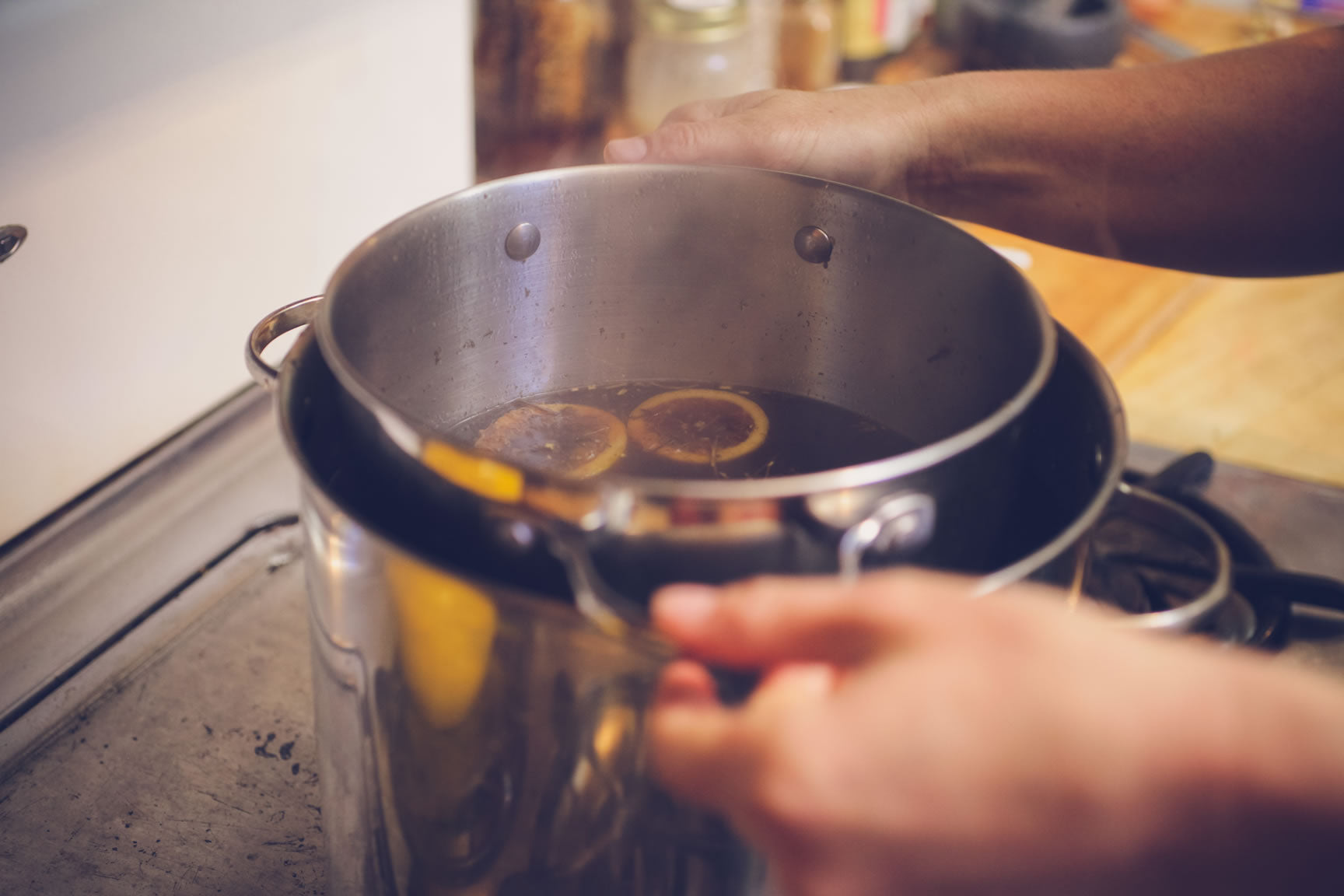- Continue Shopping
- Your Cart is Empty
Mugwort Lemon Beer

What You'll Need
Equipment:
- large stock pot or brew pot
- larger pot for cooling
- thermometer
- food grade strainer
- bottling funnel
- 2 one gallon jugs
- musting cap
- airlock
- Mini AutoSiphon and Racking cane
- bottle filler
- 10 air tight bottles with swing top caps or 10 cleaned recycled beer bottles and 10 caps
Ingredients:
- 1 gallon spring water or distilled water
- .3 ounces (8 grams) dried mugwort leaves
- 1 ¼ pounds dark brown sugar
- 3 large lemons
- 1/4 packet champagne yeast, beer yeast, or wild yeast starter
- large bag of ice for cooling after the boil
- brewery sanitizer
It was our pleasure this past summer to host Pascal Baudar at the booth we ran as part of the Santa Barbara Fermentation Festival. We sold out of his book, The New Wildcrafted Cuisine: Exploring the Exotic Gastronomy of Local Terroir, before he was halfway through his time, but he stuck around and chatted with folks, answered questions, and poured samples from some of his most recent wild creations. One particularly memorable brew featured mugwort prominently, and the flavor has haunted me since then. This is a different recipe than the one he poured for us that day; it undergoes a longer ferment and becomes alcoholic in a way that the original wild soda was not. However in thumbing through the book, I saw this recipe for Mugwort-Lemon Beer, and thought of the taste of mugwort on my tongue in the summer heat. I imagined it darker and deeper, with a touch of alcoholic bite to it…and so I made this beer.
Part of the beauty of this book is that, although it gives recipes, it is really more of a nudge to foragers and woodland wanderers to experiment with the wild flavors found all around us, from leaves on the forest floor, to berries, bark, and stems. This recipe is a good jumping-off point; wild, but with ingredients easily obtained from the herb department of many a local grocery. Try it, and become inspired.
Directions
1) Sanitize all your equipment
Mix the powdered brewery sanitizer with water per package instructions and sanitize all your equipment. See our article How Does Sanitation Work for more information about sanitation vs. washing.
2) Combine ingredients and boil
Mix the water, mugwort, and brown sugar in a large, non-reactive pot. Halve or quarter the lemons and squeeze the juice into the pot, then add the lemons to the pot, too. Bring the solution to a boil, and let it boil for 30 minutes.
3) Cool
Let the liquid cool to 70° F. The pot may be placed inside a larger pot, partially filled with cold water or ice, to speed cooling.
4) Strain into your fermenter
When the liquid has reached 70° F, strain it into a sanitized glass gallon jug using a coffee filter or cheesecloth lining your bottling funnel.
5) Add yeast and ferment
Add the yeast. Pour the yeast onto the top of the brew in the jug and let it sit a few minutes to rehydrate. After a few minutes swirl the jug to mix the yeast into your brew.1 packet of yeast is enough to ferment 5 gallons, so it is not necessary to use the whole packet; just pour in about a quarter of the packet of yeast. 
Affix a musting cap and airlock to the jug and allow the brew to ferment for 10 days, out of direct sunlight.
6) Rack and prime for bottling
Siphon the beer into another sanitized gallon jar. Add 1/2 teaspoon of brown sugar per pint, as priming sugar. Swirl to dissolve sugar.
7) Bottle and store for secondary fermentation
Siphon the beer into sanitized clamp-top beer bottles or clean recycled beer bottles and cap. Store at cool room temperature for 3-4 weeks to allow carbonation to build up. The beer is best if left to bottle-condition for 7 or 8 weeks.
Over to You
It’s part of our mission here at Mountain Feed to help you make delicious, sustainable, homemade food more often. Stop by and say hello on Facebook, Twitter, Instagram or Pinterest. Or, as always, you can do it the old fashioned way and come by the store to speak with one of our in-house experts.
